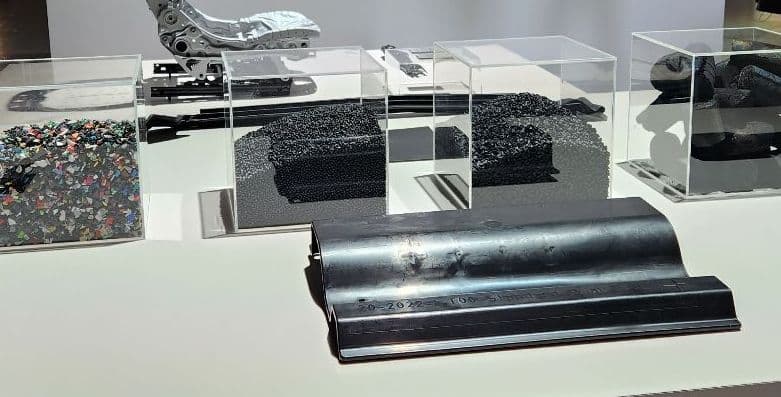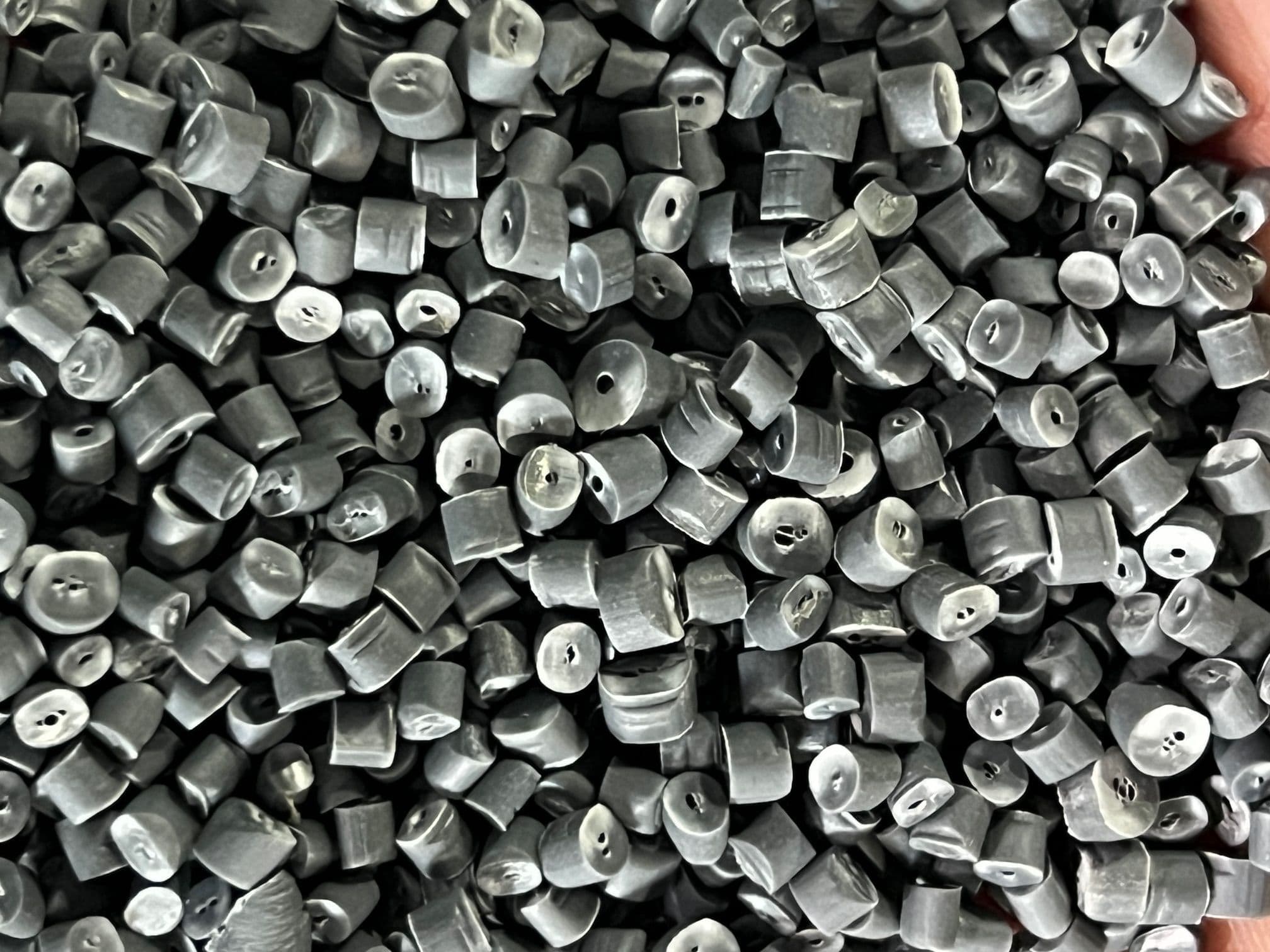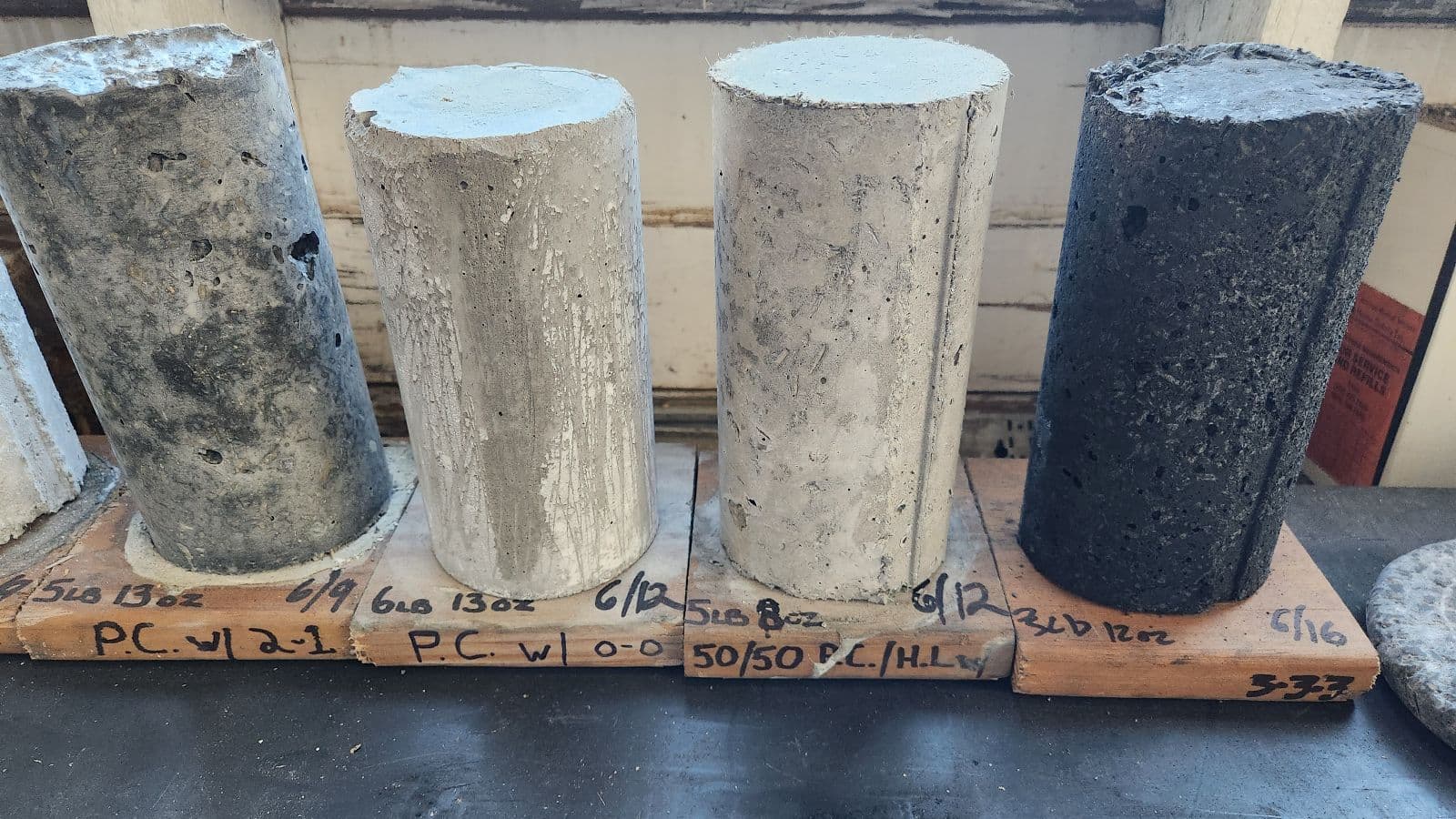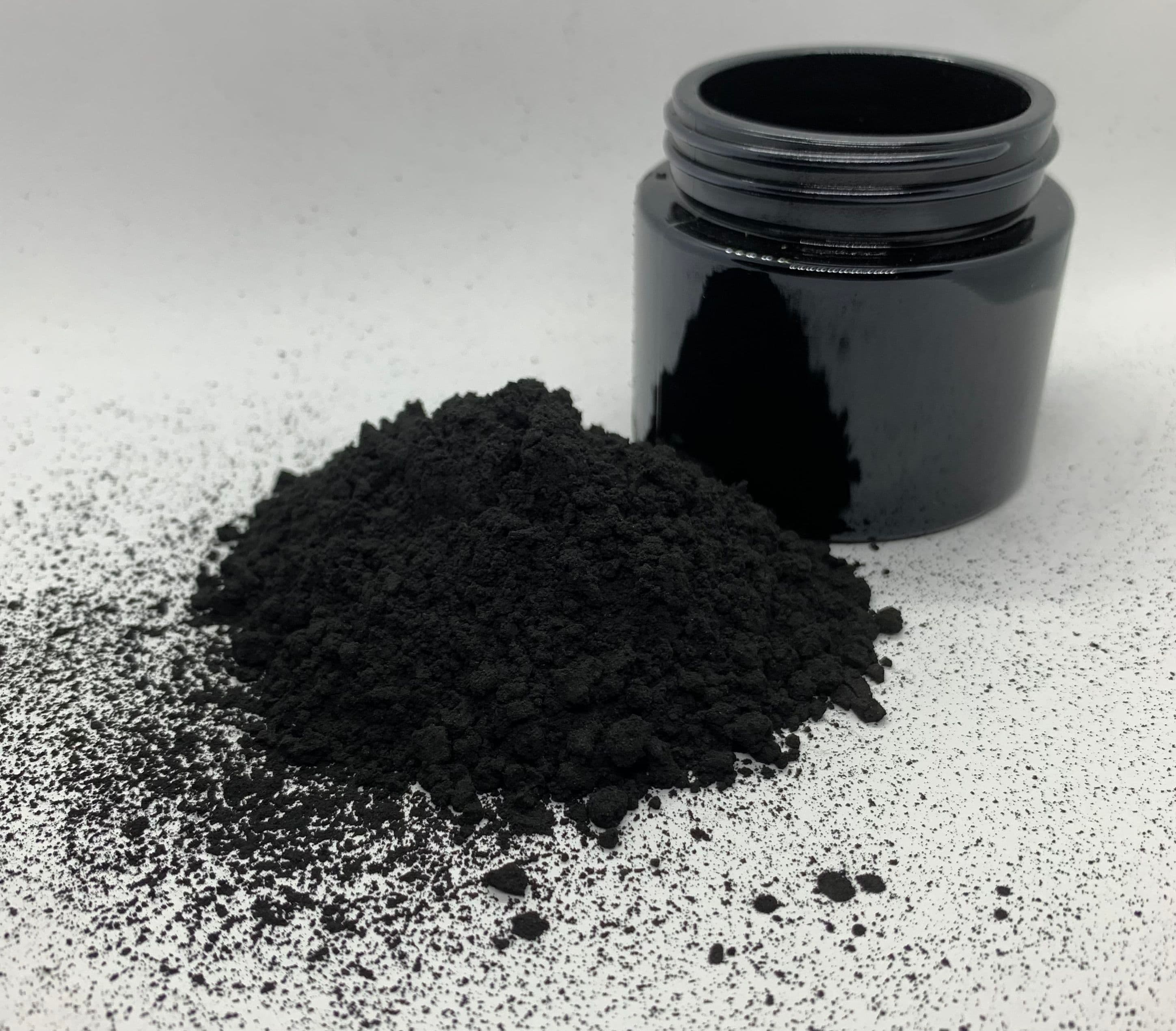Dama Black boasts properties like high thermal resistance and UV stability. How do these attributes, achieved using plant-based biomass, compare to traditional petroleum-based materials?
Dama Black's high thermal resistance and UV stability, derived from plant-based biomass, match or exceed the performance of traditional petroleum-based materials in many applications. Its unique structure enhances durability and extends product lifespan, offering a sustainable alternative.
Scalability is ensured through efficient production processes that utilize abundant, renewable biomass, making it viable for large-scale industrial use. Regarding cost-effectiveness, Dama Black offers competitive pricing, especially when considering its environmental benefits and alignment with sustainability goals. By replacing petroleum-based fillers like carbon black, manufacturers can reduce their carbon footprint while maintaining high-performance standards, achieving both economic and environmental value.

Can you explain the scientific principles behind BiCRUS process and how it removes more CO₂ than it emits?
The BiCRUS process converts waste biomass into Dama Black, a carbon-negative material, through pyrolysis—a thermal decomposition method conducted in an oxygen-limited environment. This process locks carbon from biomass into a stable solid form, preventing its release as CO₂.
For every ton of Dama Black produced, three tons of CO₂ are sequestered, making it a net-negative solution. Additionally, the energy required for production is offset by renewable sources, further reducing emissions.
Scaling this innovation presented challenges, including securing consistent biomass supply chains, optimizing production efficiency for large volumes, and ensuring seamless integration into existing manufacturing processes. Dama Black is now scalable, sustainable, and a key enabler for industries aiming to meet net-zero targets.

Dama Black is marketed as an alternative to petroleum-based carbon black and talc. How does it perform in terms of pigment intensity, compatibility with different polymers, and durability across key applications such as automotive and construction materials?
Dama Black delivers exceptional performance as an alternative to petroleum-based carbon blacks across key metrics:
- Pigment Intensity: Dama Black offers pigment intensity comparable to traditional carbon blacks, ensuring deep, rich coloration in plastics, rubbers, and coatings. It also demonstrates high dispersibility, providing consistent color uniformity across various polymer systems.
- Compatibility: Engineered for versatility, Dama Black seamlessly integrates with a wide range of polymers, including HDPE, PP, PVC, bioplastics, and elastomers, without requiring significant modifications to existing manufacturing processes. This makes it an easy-to-adopt solution for industries such as automotive and construction.
- Durability: Dama Black enhances thermal resistance, UV stability, and mechanical strength, contributing to long-lasting performance. In automotive applications, it improves lightweight capabilities while enhancing thermal and abrasion resistance. In construction, it reduces porosity, improves water retention for curing, and reinforces material integrity.
Overall, Dama Black not only matches but often surpasses petroleum-based alternatives in performance while delivering sustainability benefits.

With Dama Black being adopted in diverse industries, what considerations—technical or design—do you prioritise when tailoring the material for applications as varied as automotive plastics, cosmetics, and 3D printing?
When tailoring Dama Black for diverse applications such as automotive plastics, concrete, and 3D printing, we prioritize the following considerations:
Application-Specific Performance
- Automotive Plastics: Designed for thermal resistance, lightweight properties, UV stability, and mechanical reinforcement to meet durability and efficiency demands.
- Concrete: Optimized for internal curing properties, lightweight aggregate benefits, and cement replacement capabilities, ensuring improved durability, reduced porosity, and enhanced sustainability in construction materials.
- 3D Printing: Ensures compatibility with filament extrusion and resin formulations, featuring enhanced thermal stability and flow characteristics for precise, high-performance outputs.
Customization and Scalability: We collaborate with customers early in the development process to tailor particle size, surface area, and chemical compatibility to their specific manufacturing needs.
Sustainability and Compliance: Dama Black’s carbon-negative properties provide a universal value-add for customers focused on reducing environmental impact. We meet or exceed industry-specific regulatory standards (e.g., ASTM standards for concrete and automotive requirements), ensuring smooth adoption without compliance barriers.
Cost Efficiency and Supply Chain Integration
We optimize our BiCRUS process to maintain consistent quality at competitive costs, enabling scalable production with flexible volumes tailored to client needs. Dama Black is designed for easy adoption without requiring significant modifications to existing infrastructure.

Certifications and verification processes play a vital role in building trust and credibility. Can you walk us through Dama BioPlastics' carbon credit verification process and the standards you adhere to for certifying the carbon-negative impact of your materials?
Certifications and verification are essential to Dama BioPlastics' mission of building trust and ensuring transparency in our sustainability claims. Our carbon credits are verified through Puro.Earth, a leading platform for certifying carbon removal solutions.
Here’s how our verification process works:
1. Rigorous Data Collection and Lifecycle Assessment: We conduct a detailed cradle-to-grave lifecycle assessment (LCA) for Dama Black to quantify its carbon-negative impact. This includes measuring CO₂ removal during the BiCRUS process, its ability to lock carbon within the material, and the net reduction in emissions compared to petroleum-based alternatives.
2. Independent Verification with Puro.Earth: Puro.Earth audits and verifies our data to ensure compliance with the highest industry standards for carbon removal. This includes validating our process against their criteria for bio-based carbon removal and ensuring that each ton of Dama Black remains carbon-negative while maintaining environmental integrity.
3. Certification of Carbon Credits: Once verified, Puro.Earth issues tradable carbon removal certificates (CORCs) for Dama Black, which businesses can use to offset their emissions and meet sustainability targets. These credits are traceable, providing full transparency and accountability.
4. Continuous Monitoring and Improvement: We continuously optimize our processes to maximize carbon sequestration while maintaining product performance.

Every innovation faces its share of setbacks. Could you share an example of a challenge or failure during the development of Dama Black, and how those learnings shaped your approach to innovation or business strategy?
One of our most significant setbacks occurred during the early stages of scaling our BiCRUS process to commercial production. While the lab-scale process delivered consistently high-quality material, we encountered unexpected issues with temperature regulation and biomass feedstock variability when transitioning to larger-scale reactors.
This led to inconsistent material properties, particularly in thermal resistance and mechanical strength, which delayed production timelines and affected initial customer trials. The root of the issue stemmed from how different biomass feedstocks reacted under scaled-up process conditions.
How we overcame it:
- Refining feedstock sourcing: We established stricter quality controls and sourcing guidelines for biomass, ensuring uniformity in moisture content, composition, and particle size.
- Process optimization: We redesigned parts of the BiCRUS process, integrating advanced real-time monitoring systems and fine-tuning temperature and pressure controls to accommodate feedstock variability.
- Customer collaboration: We maintained transparent communication with customers, using feedback from delayed trials to refine the material’s performance attributes.
What we learned:
This challenge taught us the importance of flexibility in innovation and the need to integrate scalability considerations from the earliest stages of R&D. It also underscored the value of robust partnerships with suppliers and customers, as their input proved vital in overcoming setbacks and improving our approach.
Today, these lessons have strengthened our business strategy. We now approach each new material or process with a focus on scalability and adaptability, ensuring that our solutions not only meet performance and sustainability standards but are also ready to handle the demands of global markets.
How does Dama BioPlastics navigate the trade-offs between environmental impact, cost, and material performance when working with high-stakes partners in the automotive and construction industries?
At Dama BioPlastics, we are deeply committed to navigating the delicate balance between environmental impact, cost, and material performance, particularly when working with high-stakes partners like Polestar and other leaders in the automotive and construction industries. Our collaboration with the Polestar 0 Project—which is striving for a fully carbon-neutral car—has sharpened our approach to these challenges.
1. Environmental Impact vs. Cost: While sustainability is at the core of our mission, we understand that cost is a critical factor for our customers, especially in industries like automotive and construction, where material costs can significantly impact overall profitability. We approach this by optimizing the cost structure of Dama Black through:
- Scale and Efficiency: As we scale production, we leverage economies of scale to reduce the per-unit cost of our material, making it more accessible to a wider range of industries.
- Long-term Impact: By focusing on the long-term benefits of reduced carbon emissions, we offer our partners a cost-benefit analysis that demonstrates not only the immediate performance gains but also the substantial long-term value in terms of regulatory compliance, carbon credit generation, and market differentiation.
2. Material Performance: Performance is non-negotiable, especially in the high-performance automotive and construction sectors. Dama Black’s inherent properties—like improved thermal stability, mechanical strength, and UV resistance—ensure it meets or exceeds the performance standards required in these applications. When working with automotive partners like Polestar, we:
- Conduct rigorous testing to ensure our materials meet stringent requirements for both safety and functionality.
- Continuously iterate on product formulations to optimize for durability, while maintaining carbon-negative properties.
Working with industry leaders like Polestar has reinforced our belief that with innovation, sustainability, and strategic cost management, it is possible to create a meaningful impact that benefits both the planet and the bottom line.









